|
The
|
|||||||||||||||||||||||||||||||||||||||||||||||||||||||||||||||||||||||||||||||||||||||||||||||||||||||||||||||||||||||||||||||||||||||||||||||||||||||||||||||||||||||||||||||||||||||||||||||
THE BURGENLAND BUNCH NEWS - No. 291 October 31, 2018, © 2018 by The Burgenland Bunch All rights reserved. Permission to copy excerpts granted if credit is provided. Editor: Thomas Steichen (email: tj.steichen@comcast.net) BB Home Page: the-burgenland-bunch.org BB Newsletter Archives: BB Newsletter BB Facebook Page: TheBurgenlandBunchOFFICIAL Our 22nd year. The Burgenland Bunch Newsletter is issued monthly online. The BB was founded by Gerald Berghold, who died in August 2008. |
|||||||||||||||||||||||||||||||||||||||||||||||||||||||||||||||||||||||||||||||||||||||||||||||||||||||||||||||||||||||||||||||||||||||||||||||||||||||||||||||||||||||||||||||||||||||||||||||
| Current Status Of The BB: * Members: 2680 * Surname Entries: 8454 * Query Board Entries: 5733 * Staff Members: 14 |
|||||||||||||||||||||||||||||||||||||||||||||||||||||||||||||||||||||||||||||||||||||||||||||||||||||||||||||||||||||||||||||||||||||||||||||||||||||||||||||||||||||||||||||||||||||||||||||||
|
|||||||||||||||||||||||||||||||||||||||||||||||||||||||||||||||||||||||||||||||||||||||||||||||||||||||||||||||||||||||||||||||||||||||||||||||||||||||||||||||||||||||||||||||||||||||||||||||
1) THE PRESIDENT'S CORNER (by Tom Steichen)  In
this month's collection of bits and pieces in Article 1, I start off
with a staff retirement notice, something I never enjoy reporting but recognize must come for
all of us. I follow that with a more enjoyable task: telling about the 10-year anniversary of
BH&R as a BB affiliate. Then another enjoyable task: talking about the availability
of more digital record images! I also explain an old term: Cameralfond. And then I
present some interesting immigration images (my thanks to Bernhard Hammer for pointing me to
these!). The rest is the routine bits that I include most months, plus a short note on my recent
travels. In
this month's collection of bits and pieces in Article 1, I start off
with a staff retirement notice, something I never enjoy reporting but recognize must come for
all of us. I follow that with a more enjoyable task: telling about the 10-year anniversary of
BH&R as a BB affiliate. Then another enjoyable task: talking about the availability
of more digital record images! I also explain an old term: Cameralfond. And then I
present some interesting immigration images (my thanks to Bernhard Hammer for pointing me to
these!). The rest is the routine bits that I include most months, plus a short note on my recent
travels. Article 2 is a fun article, as I get to show how one emigrant traveled From Home To Ship. It is not often we get a glimpse of how our ancestors traveled across Europe, so enjoy this one! Article 3 introduces a new DNA tool: DNA Painter. While I find its premise interesting, I wonder how many of us have access to enough data to make it worthwhile. Nonetheless, I show what I have been doing with it to give you an idea of what it offers. Article 4 is by Jane Horvath, where she asks What's in a (Hungarian) Name?, then proceeds to answer the question! I learned some new things... and I expect you will too. The remaining articles are our standard sections: Historical Newsletter Articles, and the Ethnic Events and Emigrant Obituaries sections. Fritz Königshofer retires from the BB Staff: It is with some sadness that I must announce that Fritz Königshofer, our BB Austrian Editor, has decided to retire from the BB staff. As you may remember, Fritz was the sole remaining member of Gerry Berghold’s first announced staff... without him we truly are orphans! Fritz joined the BB in January of 1998 (just one year after the BB began) and by September of that year was asked to join the initial Editorial Staff, which he did, as he was contributing material to the newsletter almost every month anyway! Thus he was a BB staff member for a full 20 years (and a BB member for even longer). His resignation now leaves me as the longest active-tenure staff member (at 18 years, 6 months, with VP Klaus Gerger just 3 months behind). When I asked two months ago for staff messages concerning the 10-year anniversary of Gerry’s death, Fritz replied: 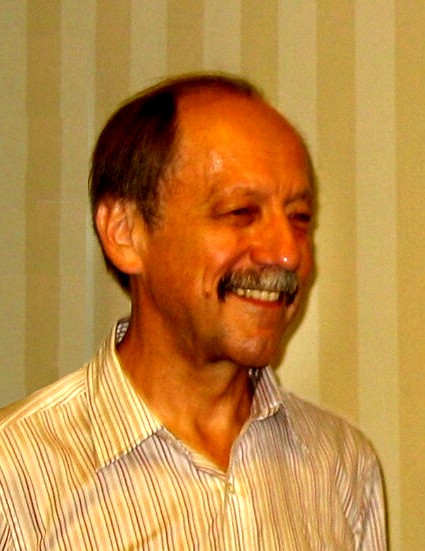 Hi
Tom, As much as I would have liked to contribute, I have lost my ability to write e-mails longer
than about two sentences. Even these require much time. So unfortunately, I have to close the
curtain almost completely. Being able to participate in building the BB was my finest
achievement. Gerry and you were inspired and creative leaders who always found the right
subjects and words. With my best wishes, Fritz Hi
Tom, As much as I would have liked to contribute, I have lost my ability to write e-mails longer
than about two sentences. Even these require much time. So unfortunately, I have to close the
curtain almost completely. Being able to participate in building the BB was my finest
achievement. Gerry and you were inspired and creative leaders who always found the right
subjects and words. With my best wishes, FritzWith some trepidation, I followed up with Fritz asking whether I should interpret “I have to close the curtain almost completely” as a retirement message... and he replied: Hi Tom, my friend, The answer is yes, I am now retired from the BB staff. Nevertheless please feel free to request my comments. To the limited extent this has come to, I will be happy to oblige. The same is good for other BB friends. I love genealogical questions, from simple beginner to nuanced and complex ones. If you don’t hear from me, don’t hesitate to push me a little. For now, with my regards, Fritz This was a retirement that I knew was coming but, selfishly, I hoped not, as I did not want the BB to lose Fritz’ expertise... and, for his sake, I hoped Fritz’ health would give him a few more good years. Fritz was a student of his ancestry, an avid researcher, and a wealth of knowledge about the details of emigrant- and pre-emigrant-era Burgenland and its surroundings. He freely shared that knowledge in well-thought-out messages to the staff and to BB members. It is an exception when one of the early BB newsletters does not carry a commentary from him. Fritz was born in Graz, Austria, and earned a doctorate in Applied Mathematics from the University of Graz, but he has lived in the US since 1981. During his working career here, he was an information technology and network specialist at the World Bank in Washington, DC, specializing in Eastern Europe and Central Asia. Fritz began genealogy in 1994. His connection to Burgenland was that his great-grandfather, Adolf Königshofer, emigrated from Styria to Burgenland in 1882 to teach in Olbendorf, Gamischdorf and Poppendorf. In Poppendorf, Adolf succeeded Gerry Berghold's great-grandfather, Emil Langasch. Further, two of Adolf's five children emigrated to the US and Fritz' grandfather, Koloman Königshofer, was a teacher in Raabfidisch, Rauchwart, Neumarkt an der Raab and married Anna Koller, who descended from ancestors in Rechnitz, Rohrbach bei Mattersburg and Lockenhaus. As you can see from Fritz' second message above, he is still willing to participate, but only at a much-reduced, one-off level. For that reason, I have removed his name from our online staff listing and from routine BB staff message distributions. Still, do involve him when you believe he can help sort something out, as he indicates he wishes that we do so. Also, feel free to send a thank you note to Fritz. I, for one, will miss greatly having him as part of our routine interactions!
That initial webpage was hosted on Frank's private web space on one of AOL's "Hometown"
user servers. Frank Klepeis provided the programming work and, by 2008, with the field
assistance of numerous helpers, the website had grown to list over 3,000 honorees, mostly from
New York and New Jersey but already branching out to include the Lehigh Valley of Pennsylvania,
Kansas, Nebraska, South Bend, Indiana, and other areas.
Direct links to the above record sets have been added to the BB FamilySearch (LDS)
pages.
We will, of course, monitor these records and add links to the images when they become
available. |
|||||||||||||||||||||||||||||||||||||||||||||||||||||||||||||||||||||||||||||||||||||||||||||||||||||||||||||||||||||||||||||||||||||||||||||||||||||||||||||||||||||||||||||||||||||||||||||||
2) FROM HOME TO SHIP  We
often receive questions on how emigrants traveled from Burgenland to their passenger ship
port... and we seldom can answer that question with any detail. Sure, we know they made their
way to a nearby train station... and then traveled by train to the port city... but what was the
route? Unfortunately, few records exist of that travel... more fortunately, we now have an
example we can show you! We
often receive questions on how emigrants traveled from Burgenland to their passenger ship
port... and we seldom can answer that question with any detail. Sure, we know they made their
way to a nearby train station... and then traveled by train to the port city... but what was the
route? Unfortunately, few records exist of that travel... more fortunately, we now have an
example we can show you!Paula Bolland writes (in part): Hi Tom - Richard [Potetz] thought I should share this with you. You have been very helpful with research from my "Führinger" roots in the last few years. It is the last document that my grandfather had in Hungary, brought with him to the States. According to my 7th cousin, once-removed, Stefan Pleyer, who lives in Ráckeve, Hungary,
Obviously, my grandfather had to have this to get his passport, we assume as proof of
identity. My grandfather was born in 1885. This worker-ID was done on March 30, 1905 (shortly
before he immigrated on July 26, 1905).
Clearly, there must have been one more leg on the trip: from Leipzig to Bremen, making 5 legs
in all... some things (4 train changes!) don't change, even in a hundred years! |
|||||||||||||||||||||||||||||||||||||||||||||||||||||||||||||||||||||||||||||||||||||||||||||||||||||||||||||||||||||||||||||||||||||||||||||||||||||||||||||||||||||||||||||||||||||||||||||||
3) DNA PAINTER  I
discovered a new DNA tool available for free on the web (free in its basic form), so I thought
I'd tell you something about it. I
discovered a new DNA tool available for free on the web (free in its basic form), so I thought
I'd tell you something about it.The primary goal for DNAPainter is to graphically show you which parts of your DNA come from which of your ancestors. At first blush, that does not seem possible, as most of our ancestors died long before DNA testing was available, so we can't analyze their DNA. However, if you have a verifiable match with a known cousin, then the DNA you share with that cousin has to have come from the ancestors where your tree and your cousin's tree come together. Thus you can name a husband-wife pair who provided that common chunk of DNA, and that chunk had to have been passed down intact to you through all of your intervening ancestors. For example, you share DNA from your common grandparents with each of your first cousins. Likewise, the common DNA you share with a second cousin came from your joint great-grandparents; and the DNA you share with a third cousin came from great-great-grandparents, etc. DNAPainter uses only the start- and end-point addresses of that common DNA to color a symbolic chromosome (see below) with a color you select for each ancestral husband-wife pair (the actual values of the DNA are not needed). In the chart below, each chromosome is shown with two faint bars, a blue one for paternal data and a pink one for maternal data (the X chromosome only has a maternal bar if you are male, as your father passed along a paternal Y, not a maternal X; Y-DNA is not evaluated as part of an autosomal test). On those faint blue and pink bars are mapped/painted the segments of DNA that come from each ancestral pair. For example, the yellow segments in the chart below came to me from my great-grandparents Josef Weiss and Theresia Halbauer, who are the Burgenland-born parents of my maternal grandmother Barbara. While I don't know whether Barbara received this DNA specifically from her father, her mother, or as a mix of both, I do know Barbara passed it down whole to my mother and my mother passed it to me. Likewise, I know that the dark green segment in chromosome 17 came from a set of Barbara's great-grandparents and was passed whole through her and my mother to me. Further, the light green segment beside the yellow segment in chromosome 1 came from a different set of Barbara's great-grandparents, and was passed whole through her and my mother to me. And I know both green segments (light and dark) had to pass through Theresia Halbauer (but the dark green segment came through her father and the light one through her mother).  In both green-segment cases above, they appear to abut a yellow segment; in fact, the chromosome 1 yellow and green segments do not overlap and the chromosome 17 segments only slightly overlap. Thus these three cousins of mine would not appear to be related to each other based only on the DNA they share with me, though they well may share segments with each other that I do not share! I just mentioned that the yellow and green segments in chromosome 17 overlap... but you can't see that in this display [alternative displays do show the overlap] because the green segment is painted over the yellow segment... and that is by my choice! The green segment comes to me from my great-great-great-grandparents Mathias Halbauer and/or his wife Elisabeth Unger, whereas the yellow segment comes to me from their granddaughter (my great-grandmother) Theresa Halbauer, mother to my grandmother Barbara Weiss. Given a choice, I would much rather label the overlapped DNA with my more-ancient ancestors (as I know it had to come to me through their descendants anyway). DNAPainter lets you make that choice by the order in which you place the ancestors in the key: those listed first are painted over those that follow (the paternal and maternal paintings are done separately, of course). In my key above, all my paternal-side ancestor pairs are placed first, with a line below them and before the maternal-side ancestors. I have also chosen to label the pairs with "G" notation, so I know the "greatness" of those grandparents (GG = great-grand, for example), which helps me to know how to order them. You might note that the nesting (smaller number of G's below greater number) seems inconsistent... for example, GGGG C Reimann is after GG J Weiss... that is because Reimann is on my mother's paternal side while Weiss is on her maternal side (and all those above Weiss are on mother's maternal side). [I do a similar thing on my paternal side too.] I do all this to help me understand better where my DNA comes from (even the colors I used were chosen to create visually-related clusters that match these ordering splits). Perhaps the most informative thing I’ve noted about my DNA so far, is how big the contiguous chunks from a particular ancestral pair are. In quite a few cases, the chunks span a quarter to a half of a chromosome, which is surprisingly large to my thinking. I always presumed there would be multiple smaller pieces rather than these singular large chunks of contiguous DNA. One drawback to this tool is that it takes a lot of matches to map a large portion of the chromosomes, especially if the matches are with more-distant cousins (that is not a fault of the tool, rather a reality resulting from the small amounts of DNA we inherit from more-distant ancestors). For example, my colored bars above come from 9 paternal matches and 6 maternal matches; they paint only 31% of my paternal DNA and 10% of my maternal DNA (20% in total, which, at this rate, implies I'll need 70-90 known cousins to fully map my chromosomes!). Another drawback is that it requires you to be able to accurately identify your true relationship to each DNA match, which gets harder to do as the relationship becomes more distant. A first-cousin match only tells you that the common DNA came from either your paternal or maternal pair of grandparents. It takes a second-cousin match to assign the DNA segments to one of your four great-grandparent pairs and a third-cousin match to assign it to one of your 8 great-great-grandparent pairs. Being a once- or twice-removed cousin doesn't truly hurt, but it can halve or quarter the amount of shared DNA, so it maps and paints less than you might think. A secondary feature of DNAPainter, which becomes useful only after you have painted a significant portion of your chromosomes using known matches, is to give you clues about how you are related to a predicted but otherwise unknown DNA match. By overlaying the segments you have in common with this predicted match on your painted chromosomes, you should be able to tell which of your ancestors the unknown match shares, which should be quite useful knowledge for working out your relationship. Because AncestryDNA does not provide segment data, it is not directly useful with this tool (...which is frustrating! AncestryDNA really needs to provide a chromosome browser!). One work-around is to copy your AncestryDNA-based data to GEDmatch, where the common segment data can be shown... but that requires both you and each of your known cousins to copy their data to GEDmatch ...which a lot of cousins won't do. In fact, I have 30 predicted DNA-cousins on AncestryDNA that I've identified via paper genealogy, yet only two have transferred their data to GEDmatch; the other 28 are not useful for DNAPainter's purposes. FamilyTreeDNA and 23andMe, the other big autosomal vendors, provide the segment data directly. Despite these limitations, I find it intriguing to see where some of my DNA came from and, even more intriguing, that I can know this without ever assessing the actual DNA of those ancestors! And I hope to be able to map more of it as time goes by. If interested, you can find DNAPainter here: dnapainter.com |
|||||||||||||||||||||||||||||||||||||||||||||||||||||||||||||||||||||||||||||||||||||||||||||||||||||||||||||||||||||||||||||||||||||||||||||||||||||||||||||||||||||||||||||||||||||||||||||||
4) WHAT’S IN A (HUNGARIAN) NAME? (by Jane Horvath) (Previously published at janesgenes.com; reprinted by permission) 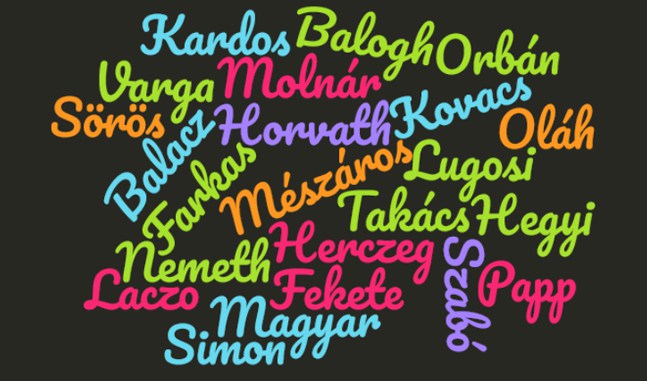 If
you have a Hungarian surname, chances are, when meeting new people, you’ll encounter some
variation of the following questions: If
you have a Hungarian surname, chances are, when meeting new people, you’ll encounter some
variation of the following questions:You’re last name is Nagy? My wife’s sister’s friend’s last name is Nagy. Are you related? Whether it’s their baseball coach from middle school, or their cousin’s next-door-neighbor who shares your surname, this new person will inevitably ask if you’re related. Maybe names like Juhasz and Balogh sound vaguely ethnic, yet possibly tribal. Perhaps you and the new person’s dentist both descend from the same band of wandering gypsies, but more likely, if you and Dr. Nemeth were to each take a DNA test, you’d share no discernible common ancestors. Note: Some particularly unusual surnames will correctly suggest a relationship between two people. This post relates to only the most common names. In my experience, everyone knows a Horvath. When I married my husband, I chose to keep my maiden name, fully aware that the questions would persist. On our honeymoon in Hawaii, we began chatting with another newlywed couple on the beach. Within moments of meeting, the wife asked, "I know a Horvath in California — are you related to him?" It’s a common assumption that all people who share a particular central European-sounding name must be related, but this is not usually the case. The odds that some person you meet named Szabo or Kovacs is related to your old college roommate with the same surname is very unlikely. In most cases, it’s akin to meeting a Bob Jones in California and asking if he’s related to your friend’s cousin, Lisa Jones, in Maine. Behind the Names, an online authority on names, lists Horvath as the 5th most common surname in Hungary in 2006, as originally reported by Hungary’s Central Office for Administrative and Electronic Public Services.1 Below are the top 20, ordered by rank and total number of people in Hungary with each surname.
In 2006, the population of Hungary was about 10 million. Looking at the numbers in the list
above, that means about 1 in 42 people were named Nagy, 1 in 45 were Kovács, and 1
in 50 were Horváth.
As might be expected, Smith and Johnson top the list. In 2010, the population
of the United States was about 325 million.3 That puts the odds of any given person
in the US having the surname Smith at 1 in 133. The 5th most common surname, Jones,
would be found in about 1 in 228 people. Compared to the population and name-occurrence
statistics from Hungary, you’re about three times as likely to meet a Nagy in Budapest as
you are to meet a Smith in Washington, DC, and over four times as likely to meet a
Horvath in Szeged as you are to meet a Jones in New York City.
These were chosen at random, but there are thousands of other “American-sounding” names that
are less common than might be expected. Toth, which is number 3 on Hungary’s list,
occurred 19,606 times in the 2010 US census, ranking it number 1,826. It may surprise some to
learn that the surname Toth is more common in the US than the surname Clinton,
which ranks number 2,242, with only 16,263 occurrences.4
Most of the names are occupational in origin. A Molnár is a miller, and
a Miller may have hailed from any part of the former kingdom of Hungary. As with any
occupational surnames, one wouldn’t expect a Baker in Florida to be related to a Baker
in the United Kingdom. Any relatedness would be purely coincidental. Descriptive names like
Nagy (large) or Kiss (small) refer to physical characteristics.
Fekete (dark-haired) could be compared to someone with the surname Black, but
we wouldn’t expect all people named Black to be related. |
|||||||||||||||||||||||||||||||||||||||||||||||||||||||||||||||||||||||||||||||||||||||||||||||||||||||||||||||||||||||||||||||||||||||||||||||||||||||||||||||||||||||||||||||||||||||||||||||
5) HISTORICAL BB NEWSLETTER ARTICLES Editor: This is part of our series designed to recycle interesting articles from the BB Newsletters of 10 years ago (a series which was started 10 years ago this very month, just after Gerry Berghold's death). Given that, this is the first time a recycled article is eligible for recycling again... and I decided that the recycled one from 10 years ago (first published 20 years ago) is worth publishing yet again! This is actually consistent with the logic of recycling articles, the theory being that we will continually have new members that might not find these older articles in our archive. But, old or new member, I hope you find it of interest. THE BURGENLAND BUNCH NEWS - No. 45 October 31, 1998 (reprinted in BB Newsletter 180, October 31, 2008) HIANZISCH & LANGUAGE CHANGES Gerry's Note: I struck some sparks in my use of the word "corrupted" when referring to dialects. First Yvonne Lockwood took me to task for Croatian and Hianzisch and now Bob Schatz has some remarks concerning Pennsylvania Dutch (Pennsylvania German or "pennsylvänisch deitsch"). The best I can say is that I used Webster's fourth definition of corrupted, "to alter from the original or correct form or version," as opposed to "change from good to bad." Nonetheless, both members have a point and I admit to a poor, albeit descriptive, choice of words. Bob Schatz writes: Just wanted to add some thoughts and general ramblings to your questions about Hianzisch in the current newsletter and to defend the language of my Pennsylvania German forebears! You asked if Hianzisch "is an early form of German dialect which was corrupted like Pennsylvania Dutch." For Shame! Pennsylvania Dutch is not a "corruption" at all—it is from the Rhineland dialect family with a few variations coming in via the Swiss and even fewer from English. Rhinelanders can understand Pennsylvania German and vice-versa. Several Pennsylvania German plays have been performed with great success in the Rhineland within the last 20 years. It is a rich and expressive language and contains an extensive technical vocabulary which belies the myth that it is a "corrupted" form of language or a language of unsophisticated people. I grew up with the language at home and later studied it with a very erudite man who eventually wrote a Pennsylvania German grammar book. Many contemporary speakers know that it is a much older language than the standard or literary German (Schriftdeutsch) in use today. A professor of mine taught that standard German is actually a child of Martin Luther and evolved from his translation of the Bible. This professor claimed that Luther went around asking various groups "Would you understand it if I wrote it such and such a way?" and then arrived at an idiomatic consensus. Linguists divide German dialects into three main bodies: High, Middle and Low. High German (Hochdeutsch) is so called because it is the family of languages spoken in the Alpine region in the south, and would include Hianzisch, Viennese and Styrian. The Middle German group is actually the family from which English evolved [Ed: Current belief is that English evolved from the Anglo-Frisian and Old Saxon dialects of invaders from the north and northwest coastal areas of present-day Germany, thus from Low German] and (I suspect but am not sure) the German dialects in the Zips and Transylvania. Low German (Plattdeutsch) is the language family from the North, on the littoral plain. It is a common but unfortunate attitude that standard German is "high" and therefore right and proper, and that dialects are "low" and therefore unacceptable or low-class. This is simply another sad expression of that human tendency to regard some people and cultures as better than others. In point of fact, most standard versions of European languages are simply the dialects of the royal houses which eventually gained hegemony—modern standard English, for example, is a version of the language which evolved in the royal court in London; it would be a very different language today if a royal house in York had gained the upper hand. We live in a culture which puts a heavy premium on the written word, but we must remember that language is primarily oral and dynamic, and that "standard" languages also only evolved once writing became popular and standardized. Our sense of "proper" English is the result of being taught grammar—"this is the right way!" But the reality is quite different: there are many ways, and all too often the "right" way is simply the way of those in power. Remember too that for centuries in Europe the language of the educated person was Latin; human snobbery referred to local native speech at any class level as "the vulgar" (hence the "Vulgate" version of the Bible). Regarding Hianzisch, I regret that I did not have the opportunity to hear and speak it growing up. My grandparents from Urbersdorf died long before I was born and no one spoke Hianzisch in our family; I would have liked to have had that experience as well as the Pennsylvania German one. The beauty of language really intrigues me. I love words and I take a great deal of delight in the infinite variation of human speech. Like nature, language is always evolving and taking on new forms of expression. I feel that we should not use words like "corruption" when discussing languages because this implies a kind of fall from a state of purity, which, after all, never existed. Otherwise, even our English would be considered "corrupt" because it is no longer German or Latin or French, and yet it is all of these. Incidentally the "Dutch" in Pennsylvania Dutch is not the misnomer that many people think it is. Frequently someone will claim that it is an English corruption of "Deutsch" or "Deitsch" but, in actuality, "Dutch" was at one time the legitimate English word for "German." Eventually, it was limited in its meaning to the people and Germanic language of the Netherlands. Sorry if this is a little incohesive. I wish I could also add more on Hianzisch. Fritz mentions the theory of Count Heinz, which I have read in several books on Burgenland. |
|||||||||||||||||||||||||||||||||||||||||||||||||||||||||||||||||||||||||||||||||||||||||||||||||||||||||||||||||||||||||||||||||||||||||||||||||||||||||||||||||||||||||||||||||||||||||||||||
6) ETHNIC EVENTS LEHIGH VALLEY, PA Saturday, November 17: Stiftungsfest of the Alpenrose Schuhplattlers at the Lancaster Liederkranz. Entertainment by Maria, John & Chip; the Alpenrose Schuhplattlers, and visiting dance groups. Info: www.lancasterliederkranz.com Friday, November 23: German Christmas Show at the Evergreen Heimatbund in Fleetwood. Info: www.evergreenclub.org NEW BRITAIN, CT Friday, November 2, 7 pm: Heimat Abend. Austrian Donau Club, 545 Arch Street, $3. Music by Frank Billowitz. Friday, November 16, 7:30 pm: Heurigan Abend. Austrian Donau Club, 545 Arch Street, $3. Music by Schachtelgebirger Musikanten. |
|||||||||||||||||||||||||||||||||||||||||||||||||||||||||||||||||||||||||||||||||||||||||||||||||||||||||||||||||||||||||||||||||||||||||||||||||||||||||||||||||||||||||||||||||||||||||||||||
7) BURGENLAND EMIGRANT OBITUARIES Wanda Maria Carroll (née Halwachs)  24/06/1927 - 15/08/2018 Wanda was born in Hamburg, Germany to parents Michael and Kathrine Halwachs. She had three older brothers, Hans, Fritz and Max, who all predeceased her. Michael Halwachs was born in Grafenschachen and, in 1930, he took his family back to Burgenland to live. As the family was Lutheran and there was no church in Grafenschachen, they settled in Pinkafeld, where the children went to school. The family returned to Hamburg during WW-II, as Michael found work there. After the war and time in England working, Wanda decided, on a whim, to travel to Australia, just to see what was there. In 1958, she set sail for the other side of the world, and found the man of her dreams. She married an Australian, Alan Carroll, in 1960 and had two children, John in 1961 and Pamela in 1962. They were happily married for almost 50 years. Wanda was a fabulous homemaker and her cooking was wonderful. She also loved to sew and craft. She was also active in her beloved Australian German Lutheran Church. She died peacefully in her sleep, aged 91, and leaves her son John, daughter Pam, son in law Gregory, granddaughters Amanda and Tamsin and great grandchildren Cooper and Lola. Wanda was laid to rest Aug. 22, 2018, at Hawkesbury/Richmond Lawn Cemetery, Richmond, Australia. Marie T. Kollar  Marie T.
Kollar, 95, formerly of Coplay, Pennsylvania, passed away on Friday August 31st, 2018 in
Fellowship Manor, Whitehall. Marie T.
Kollar, 95, formerly of Coplay, Pennsylvania, passed away on Friday August 31st, 2018 in
Fellowship Manor, Whitehall.She was the wife of the late Joseph J. Kollar. Born in Langzeil, Austria, she was the daughter of the late Anton and Theresa (Pöetl) Leitgeb. Marie was a member of St. Peter's Catholic Church in Coplay. She was a seamstress throughout the Lehigh Valley for 46 years before retiring. Survivors include a son Gerard and his wife Lisa of St. Louis, MO, brother Frank of Stiles, sister Frieda Scherr of Hokendauqua, sister in law Etta Leitgeb of Bethlehem, grandchildren Kristin M. Miller and her husband Charlie, Andy G. Kollar and his wife Tara, Alex J. Kollar and his wife Kelly, Andrew J. Bick, and Maggie G. Bick, great grandchildren Asher, Zion, and Cameron, and nieces and nephews. She was predeceased by a brother John. A Mass of Christian burial will be held at 10am on Saturday September 8th, 2018 at St. Peter's Catholic Church 4 S. 5th St. Coplay, PA 18037. There will be a viewing from 8:30-9:30am on Saturday at Brubaker Funeral Home Inc. 327 Chestnut St. Coplay, PA 18037. In lieu of flowers, contributions may be made to the church, c/o the funeral home. Online condolences can be made to the family at www.brubakerfuneralhome.com. Published in Morning Call on Sept. 2, 2018 Joseph F. Stoicsitz Sr.  Joseph
Frank Stoicsitz, Sr., 87, of Spotsylvania, Virginia, passed away on Sunday, September 9, 2018 at
Mary Washington Hospital. Joseph
Frank Stoicsitz, Sr., 87, of Spotsylvania, Virginia, passed away on Sunday, September 9, 2018 at
Mary Washington Hospital.Joseph was born on March 2, 1931 to Adolf and Anna (Keller) Stoicsitz in Coplay, PA. His family moved back to Reinersdorf, Austria, prior to WWII, and at the age of 15, in 1946, Joseph was kicked out of Austria, by the Communist government, because he was a United States citizen. He was able to finish high school and began training as a machinist, from which he retired as a shop foreman, after over 40 years. Joseph married Helen Rose Schneider and she preceded him in death. He and Helen were Catholics by faith. Survivors include two sons, Joseph “Joe” (Diane), and Richard (Anne); six grandchildren and 11 great grandchildren. Joseph will be buried next to his wife in the St. John Neumann Cemetery in Colmar, PA on Saturday October 6, 2018 at 9 a.m. Online condolences may be made at laurelhillfuneralhome.com. Published in The Reporter on Sept. 29, 2018 Hermine Stranzl (née Deutsch)  Hermine
Stranzl, 84, of the Bronx, New York, passed away on Monday, August 27, 2018. Hermine
Stranzl, 84, of the Bronx, New York, passed away on Monday, August 27, 2018.She was the wife of Franz Stranzl. Born in Glasing, Austria, she was a daughter of the late Johann and Rosina Deutsch. She was the loving mother of Walter and Frank, mother-in-law of Aileen and Helena, adored Oma of Elizabeth, Colleen, Suzanne, Matthew and Sabrina; Urgroßmutter of Mina. Besides her parents, she was also preceded in death by her sister, Rosa, and grandson, Michael. A Memorial Mass will be held on Saturday, September 1, 2018 at 9:30 am at Our Lady of the Assumption Church in the Bronx, NY. Mrs. Stranzl will be laid to rest immediately following the funeral mass at Gate of Heaven Cemetery, Hawthorne, NY. In lieu of flowers, donations may be made in Hermine Stranzl's name to the Parkinson's Foundation, 1359 Broadway, Suite 1509, New York, NY 10018 (www.parkinson.org). Fritz Neubauer  Fritz
Neubauer, 83, of Middle Village, New York, passed away on May 29, 2018. Fritz
Neubauer, 83, of Middle Village, New York, passed away on May 29, 2018.He was the beloved husband of the late Anna Neubauer. Born on August 17, 1934 in Sumetendorf, Austria, he was the founder of Eurotech Automotive Repair, Woodside, NY. He was the loving father of Monika Unger, Erwin Neubauer, Fritz Neubauer and Joseph Neubauer, father-in-law of Donna, Dorothy, Stacie and the late Josef, cherished Opa of Christian, Thomas, William, Dorothy Ann, Annamarie, Christopher, Emily, and Erich, Urli-Opa of Lorenz, Elizabeth, Valerie and Jakob, dear brother of Alois Neubauer, and also survived by many loving brothers-in-law, sisters-in-law, nieces, nephews and friends. If you would prefer, in lieu of flowers, the family is accepting memorial contributions to be forwarded to Fritz's favorite charities. Visitation: Thursday, May 31, 2018, 2-5 & 7-9 PM at Papavero Funeral Home, 72-27 Grand Avenue, Maspeth, NY 11378, Tel: (718) 651-3535. Funeral Mass: Friday, June 1st, 2018 at 9:45 AM at St. Margaret's Church, 66-10 80th Street, Middle Village, NY 11379, Tel: (718) 326-1911. Interment: St. Charles Cemetery, 2015 Wellwood Avenue, Farmingdale, NY 11735, Tel: (631)249-8700. Adolf Santa   Adolf
Santa, 94, of Allentown, Pennsylvania, passed away, Sunday October 14, 2018. Adolf
Santa, 94, of Allentown, Pennsylvania, passed away, Sunday October 14, 2018.He was the husband of the late Anna (Thullner) Santa. They were married for 62 years. Born in Jakabháza (Jakobshof), Hungary, he was a son of the late Franz and Julianna (Simitz) Santa. He was a member of St. Francis Roman Catholic Church, Allentown. Adolf was a layout operator at the former Azar Iron Works. He enjoyed working in his garden and spending time with his family. He loved Austrian-German music and played tuba in the former Schanta Family Band, which was led by his late brother, Emil Schanta Sr. He is survived by his son, Joseph A. and his wife Terry Ratzell-Santa and grandchildren Steven and Jennifer. He was predeceased by his 11 brothers and sisters. Services: 10:00 am Thursday, October 18, 2018 at the Trexler Funeral Home, 1625 W. Highland St., Allentown PA 18102. Calling will begin at 9:00 am Thursday. Contributions may be made to St. Francis of Assisi R.C. Church, 1046 W. Cedar St., Allentown PA 18102. Published in Morning Call on Oct. 16, 2018 Frieda Yost (née Weber)  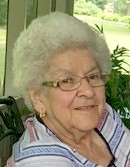 Frieda
Yost, 89, of Northampton, Pennsylvania, went home to be with the Lord on Tuesday, October 16,
2018. Frieda
Yost, 89, of Northampton, Pennsylvania, went home to be with the Lord on Tuesday, October 16,
2018.Born on February 15, 1929 in Rábafüzes (Raabfidisch), Hungary, she was the daughter of the late Julius and Frederika (Trinkle) Weber. She was the loving wife of Joseph E. Yost for 66 years before his passing in March of 2018. Frieda was a member of Holy Ghost Catholic Church in Bethlehem, where she was a member of the Prime Time seniors club. Frieda was full of wit and she enjoyed crocheting, cooking and baking. Her life was her family and she loved and cherished every moment with them. She will be lovingly remembered by her daughter, Frieda Weeks and her husband John of Palmerton, son, Joseph Yost and his wife Sherry of Kunkletown and daughter Diane Beil and her husband Richard of Northampton; 9 grandchildren and 14 great-grandchildren. Frieda was preceded in death by her sister, Anna Boandl and brother, Julius Weber. A viewing will be held on Friday, October 19, 2018 from 9-10:30 A.M. at Holy Ghost Catholic Church, 417 Carlton Ave. Bethlehem, PA 18015. A Mass of Christian Burial will follow at 10:30 A.M. Burial will follow at Cedar Hill Memorial Park. Memorial contributions may be made to Holy Ghost Church. Condolences may be offered online at www.connellfuneral.com. Published in Morning Call on Oct. 17, 2018 Margaret Stibrany (née Heber)  Margaret
P. Stibrany 92, of Allentown, Pennsylvania, passed away on Thursday, October 25, 2018. Margaret
P. Stibrany 92, of Allentown, Pennsylvania, passed away on Thursday, October 25, 2018.Margaret was the wife of the late Michael J. Stibrany. Born in Rábafüzes (Raabfidisch), Hungary, she was a daughter of the late Karl and Maria (Zeglovits) Heber. Margaret was a member of Our Lady Help of Christians Catholic Church in Allentown. Margaret worked as a Process Checker for the former Western Electric/AT&T in Allentown prior to her retirement. Surviving are her children: Son, Karl and wife Beth of Bethlehem; daughters, Lorraine, wife of John Lockawich; and Annette, wife of Leonard Oncheck both of Allentown. Her grandchildren: Michael, Daniel, Robert, Mark, and Nicholas. She was preceded in death by her daughter Elaine, and her siblings: Richard, Maria Yost, and Louise Simitz. A Mass of Christian Burial will be celebrated on Tuesday October 30, 2018 at 10:00 am in Our Lady Help of Christians. Calling will be on Monday from 6:00-8:00 pm and on Tuesday from 8:30-9:40 am in the O'Donnell Funeral Home, Allentown. In lieu of flowers contributions may be made to St. Jude Children's Research Hospital or to her church. Published in Morning Call on Oct. 27, 2018 |
|||||||||||||||||||||||||||||||||||||||||||||||||||||||||||||||||||||||||||||||||||||||||||||||||||||||||||||||||||||||||||||||||||||||||||||||||||||||||||||||||||||||||||||||||||||||||||||||
| END OF NEWSLETTER (Even good things must end!) |
|||||||||||||||||||||||||||||||||||||||||||||||||||||||||||||||||||||||||||||||||||||||||||||||||||||||||||||||||||||||||||||||||||||||||||||||||||||||||||||||||||||||||||||||||||||||||||||||
|
Burgenland Bunch Newsletter, copyright © 2018 by The Burgenland
Bunch |
 News
News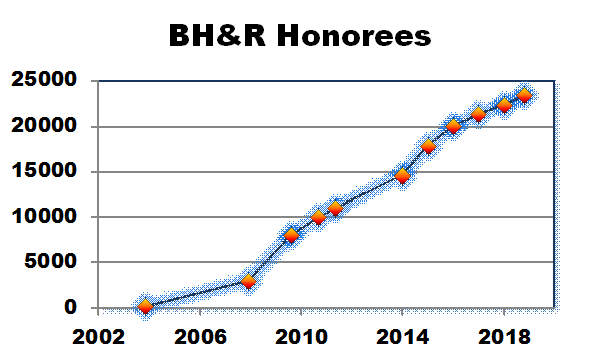
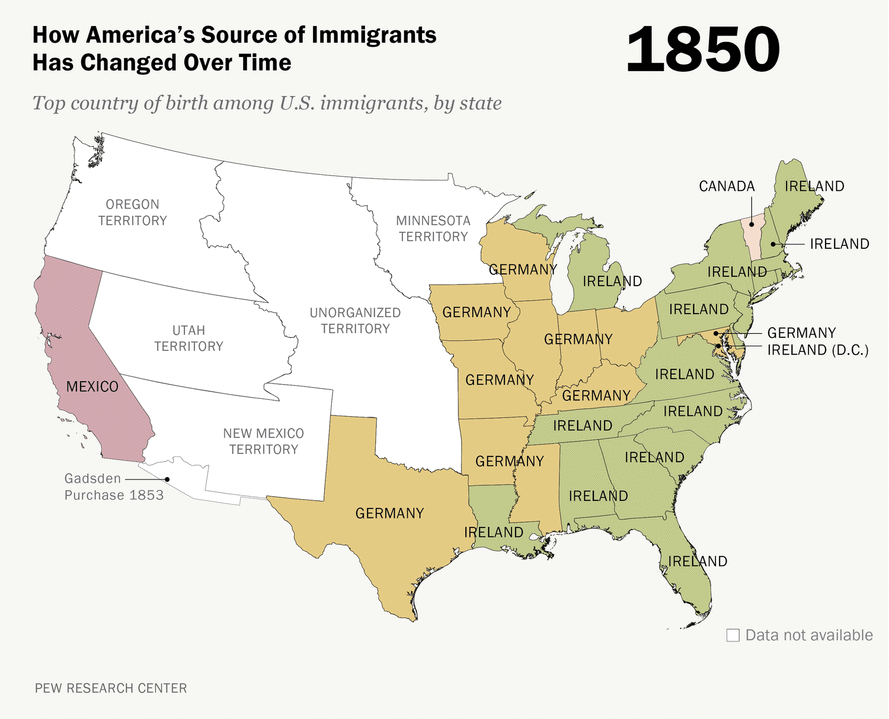
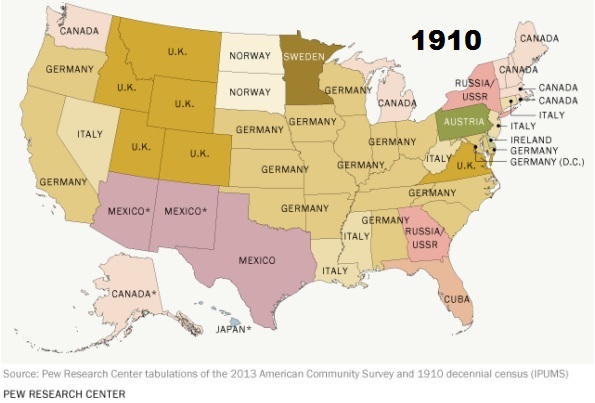
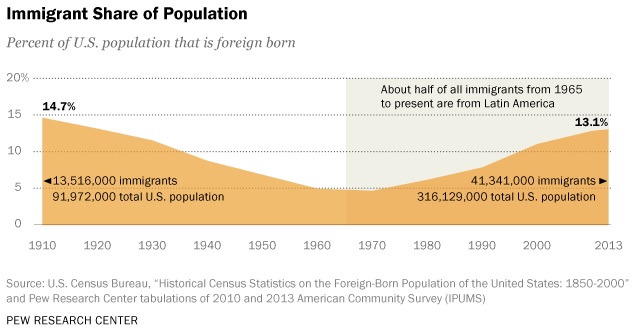
 I
would not be publishing an end-of-September newsletter because I would be away traveling for a
good part of September. In fact, my wife and I traveled through England, Wales and Scotland as
part of a guided-tour group with a company we had previously used. The trip itself was "as
advertised," with a well-informed tour guide, deluxe coach travel and first class hotels. What
differed this time was that a vicious head cold (or two) circulated through the coach,
eventually infecting well over half the group, including my wife and I. We essentially lost the
last two days of the trip, staying in our hotel room (in Edinburgh) feeling miserable... and
others on the trip fared worse. This is the first time we have been with a tour group that was
hit so hard and so extensively, so it came as an unfortunate surprise. As you might expect, the
flight home was no joy feeling as we did and it took nearly two full weeks at home before we
shook the last effects of the cold, leaving the house in the first week only to bring home
supplies!
I
would not be publishing an end-of-September newsletter because I would be away traveling for a
good part of September. In fact, my wife and I traveled through England, Wales and Scotland as
part of a guided-tour group with a company we had previously used. The trip itself was "as
advertised," with a well-informed tour guide, deluxe coach travel and first class hotels. What
differed this time was that a vicious head cold (or two) circulated through the coach,
eventually infecting well over half the group, including my wife and I. We essentially lost the
last two days of the trip, staying in our hotel room (in Edinburgh) feeling miserable... and
others on the trip fared worse. This is the first time we have been with a tour group that was
hit so hard and so extensively, so it came as an unfortunate surprise. As you might expect, the
flight home was no joy feeling as we did and it took nearly two full weeks at home before we
shook the last effects of the cold, leaving the house in the first week only to bring home
supplies!  Update
for book "The Burgenländer Emigration to America": Here is this month's update on
purchases of the English issue of the 3rd edition of Dr. Walter Dujmovits' book "Die
Amerika-Wanderung Der Burgenländer."
Update
for book "The Burgenländer Emigration to America": Here is this month's update on
purchases of the English issue of the 3rd edition of Dr. Walter Dujmovits' book "Die
Amerika-Wanderung Der Burgenländer."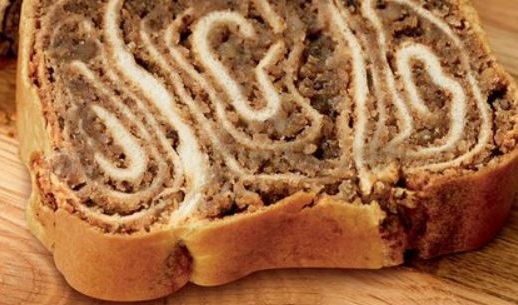 NUT
ROLL (Povitica) (from Ed Malesky)
NUT
ROLL (Povitica) (from Ed Malesky) Reminder:
We no longer have a "regular" source for Burgenland recipes. As evidenced above, a few readers
have shared favorite family recipes, and we do have a reserve for a couple of months now, but if
contributions stop coming in, we'll be begging again! So, please consider sharing your favorite
Burgenland recipes or recipe books with us. Our older relatives sadly aren't with us forever, so
don't allow your allow your favorite ethnic dishes to become lost to future generations. Send
your suggestions to BB Recipes Editor,
Reminder:
We no longer have a "regular" source for Burgenland recipes. As evidenced above, a few readers
have shared favorite family recipes, and we do have a reserve for a couple of months now, but if
contributions stop coming in, we'll be begging again! So, please consider sharing your favorite
Burgenland recipes or recipe books with us. Our older relatives sadly aren't with us forever, so
don't allow your allow your favorite ethnic dishes to become lost to future generations. Send
your suggestions to BB Recipes Editor,

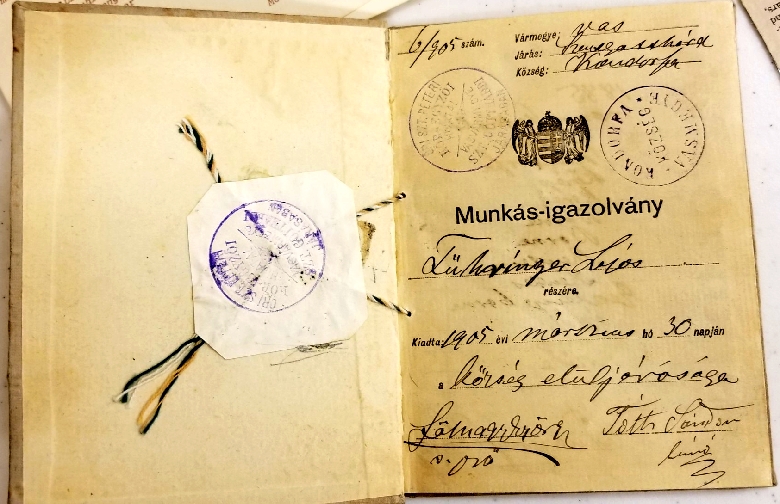
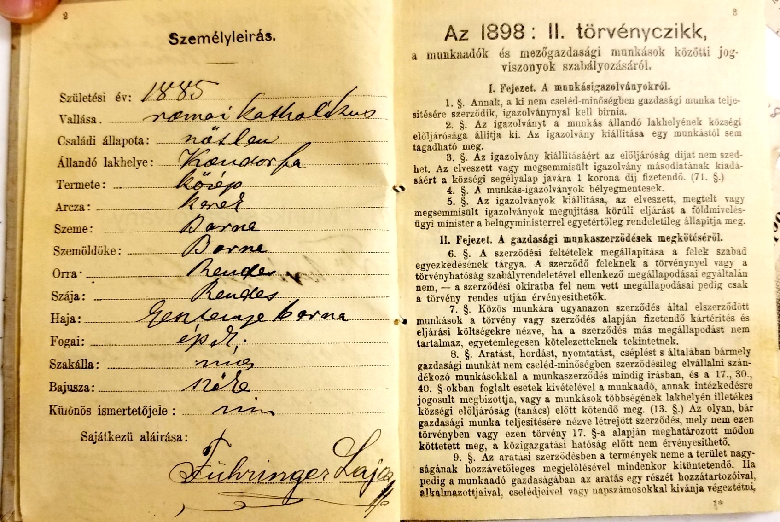

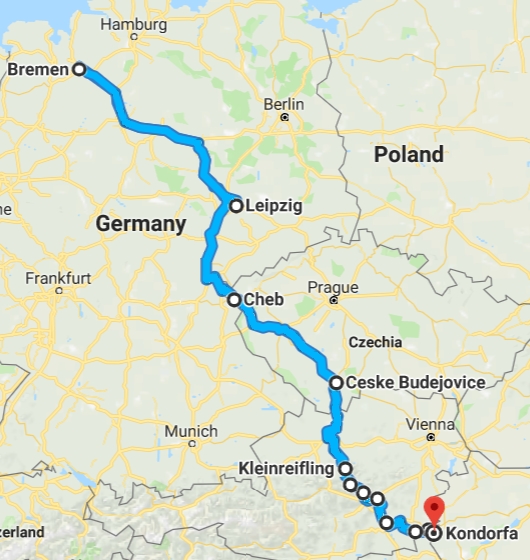 To
the right, I've Google-Mapped the route... I must confess that this is a car-based
road map, not a train-based railroad map, however, the actual train route seldom
deviated by more than 10 miles from this road route, and usually they were in sight of each
other.
To
the right, I've Google-Mapped the route... I must confess that this is a car-based
road map, not a train-based railroad map, however, the actual train route seldom
deviated by more than 10 miles from this road route, and usually they were in sight of each
other.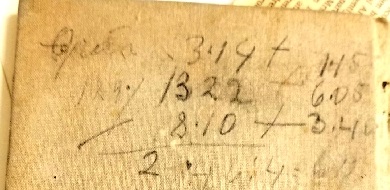 There
was one more, quite-cryptic page that Paula shared (the back cover of the booklet,
which I have trimmed here to the part of interest). It appears as if it may be a time schedule
for the legs of the journey... though, to be honest, it is hard to say with any certainty that
it is. If it is, then it lacks the identifying information, dates, am/pm and/or
place names, needed to make clear sense of it, especially how to best fit the time spans to
travel legs.
There
was one more, quite-cryptic page that Paula shared (the back cover of the booklet,
which I have trimmed here to the part of interest). It appears as if it may be a time schedule
for the legs of the journey... though, to be honest, it is hard to say with any certainty that
it is. If it is, then it lacks the identifying information, dates, am/pm and/or
place names, needed to make clear sense of it, especially how to best fit the time spans to
travel legs.